What does fashion lack? “Microcontrollers” – this states dutch fashiontech designer Anouk Wipprecht on her website. And if you have a look at her portfolio, you will most certainly agree.
Intimacy for example is the name of a dress which thanks to smart e-foils becomes transparent based on personal interactions.
https://vimeo.com/29952304
Another one is the Pseudomorphs dress: At first an innocent white, it soon becomes unique and quite colorful, when ink trickles out of diverted medical equipment and tubes to find its way down the dress, creating a new pattern every time.
https://vimeo.com/44149906
How can you make music visible? Jihye Kang and Victor Gonzalez explored this question and developed the Melodic Scribe, which drops paint on porcelain plates according to the melodies and notes of the music played.
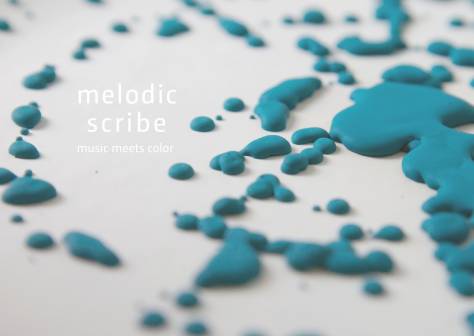
Every platte pattern is unique like the music is with every different musician.
melodic scribe #1 from Jihye Kang on Vimeo.
You can access the Fritzing Data and Arduino Code on the Fritzing Website and build one yourself!
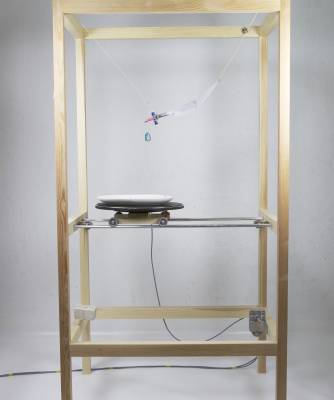
A project of the FH Potsdam, class “Musical Interfaces” by Stefan Hermann, 2012/13.
melodic-scribe.jux.com
Wow! That is an awesome idea!
In 2012 alone Singapore had to face over 2100 cases of drunk driving, some with disastrous endings. The club Zouk engaged an agency to keep their guests from driving when they definitely should not drive anything anymore by themselves and they managed to come up with a fun way to do so: the Pee Analyser.
https://youtu.be/e2OdA7DUOAQ
Former parking cards were replaced with RFID cards. As soon as the drivers used the toilet the cards got activated through a urinal testing device that measures the alcohol level in the urine. If they were hammered, they got the strong recommendation to take a taxi or could even use the clubs’ drive home service.
Howdy!
We thought we should delight our readers a little by showing some dainties of creative electronics. Yummy.
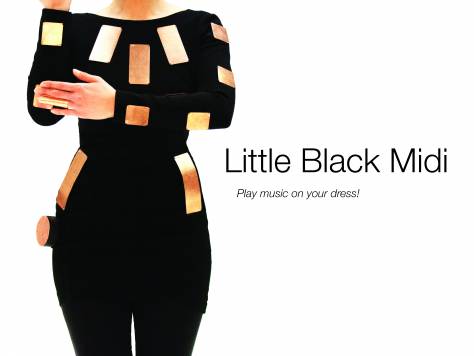
This week we want to start with the awesome Little Black Midi.
The Little Black Midi is a dress for singers and instrumentalists performing on stage. Equipped with copper plates, it will activate midi samples being played when the singer touches the plates with his/her copper ring. The dress enables the musician to combine singing, making music as well as dancing while being on stage.
The Little Black Midi was developed by Naomi Knopf while doing a class on musical interfaces held by Stefan Hermann in 2012/13 at the FH Potsdam.
Here you can see her performing a song with the dress:
https://www.youtube.com/watch?feature=player_embedded&v=6yY9UieIcjM
The dress was realized with the Arduino software, a teensy, the Ableton programme and a lot of patience and trial and error. Congratulations on the dress, Naomi!
Today, we got a visitor in the Fritzing Lab: Our neighbour, Charles Oleg, came by to show us his new creation. Charles is working on a project to bring more light into his flat by using a rotating mirror system.
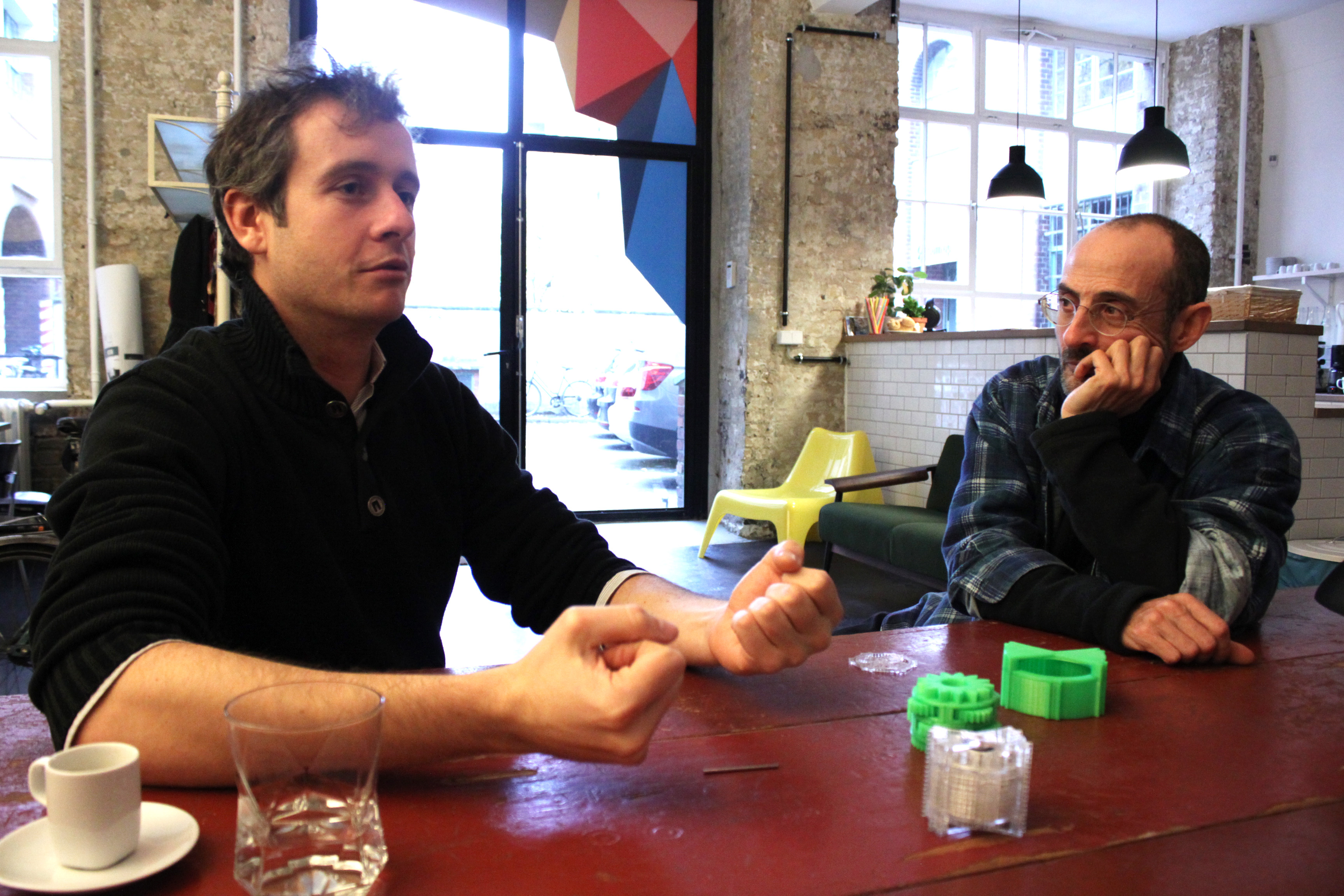
This system includes, besides two mirrors to reflect the sunlight, also some planetary gears driven by a 1 to 10 Watt motor. The system knows its position via GPS signal as well as the current position of the sun and can move accordingly.
Charles showed us two of his planetary gear prototypes: one was laser-cutted and one was 3D-printed out of PLA.

He told us that those kinds of systems that track the position of the sun and move corresponding to it to receive as much sunlight as possible are currently used in solar parks as well as in telescopes. These are large projects with huge gear-wheels, whereas Charles aims at making his lighting system affordable and open source - so that everybody can use it.
Charles scripted the gear-wheels in python and has uploaded it on GitHub. So if you want to build your own solar light system, check out his blog or his GitHub folder.
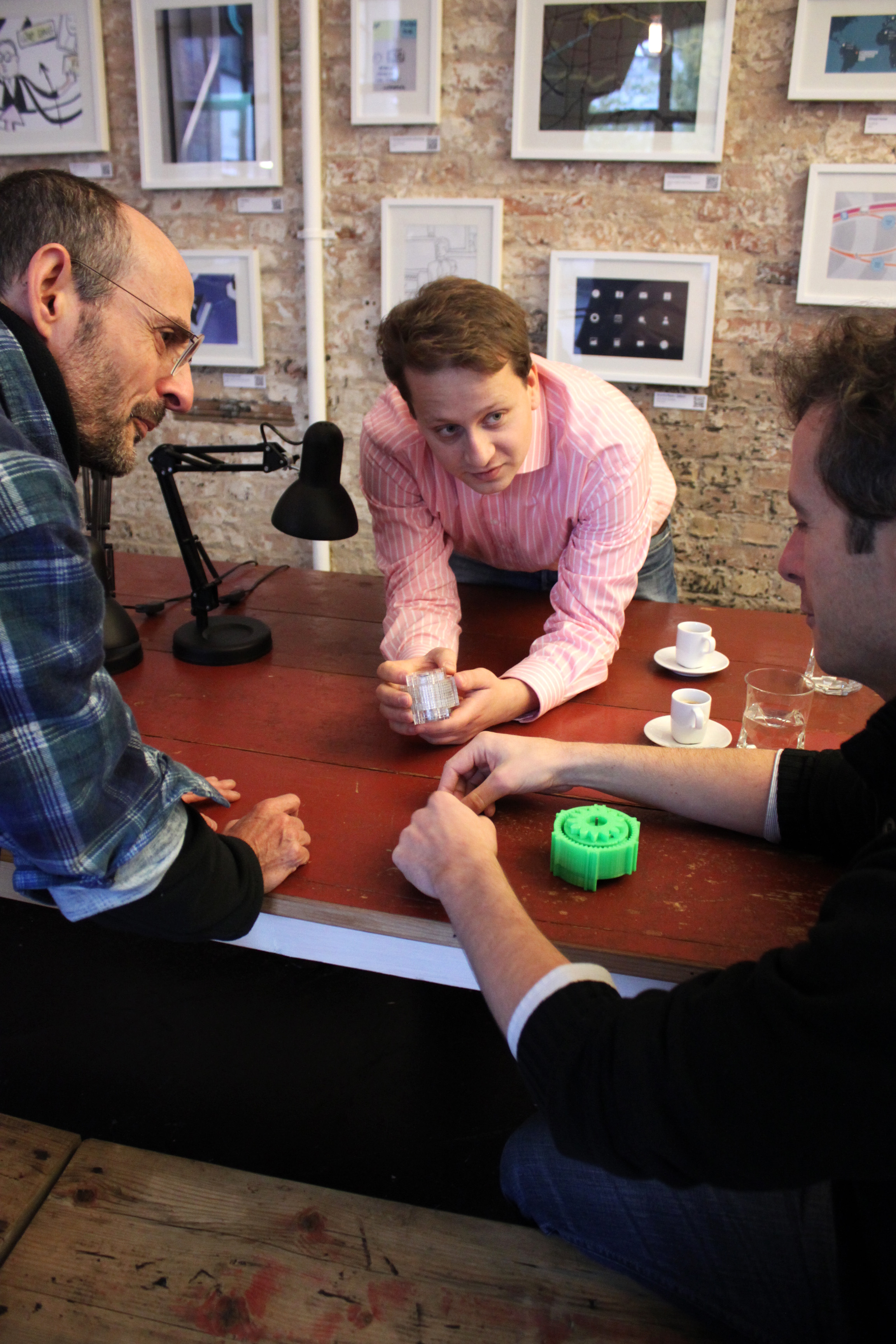
Here you can find some more pictures of the gear-wheels.





